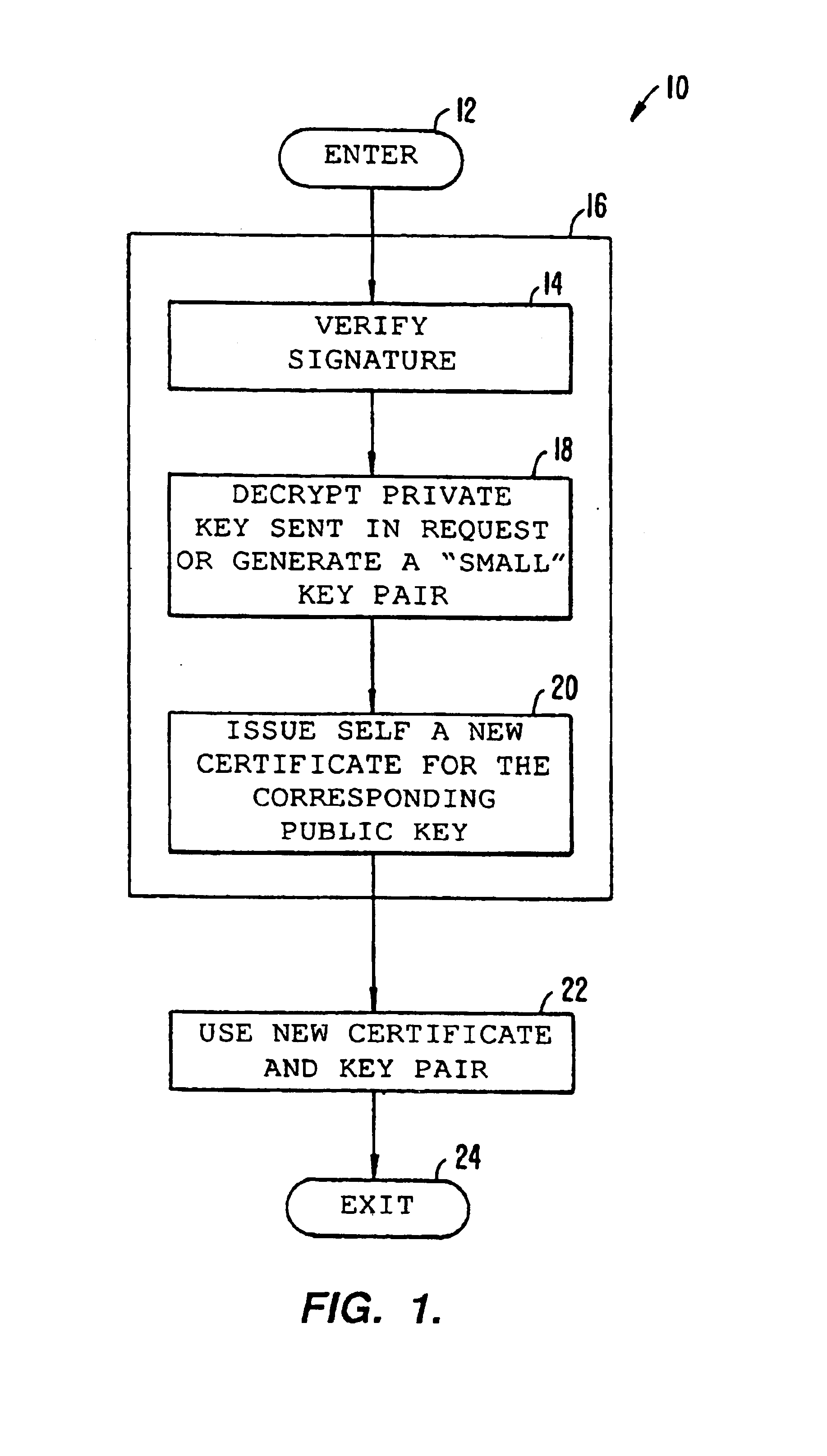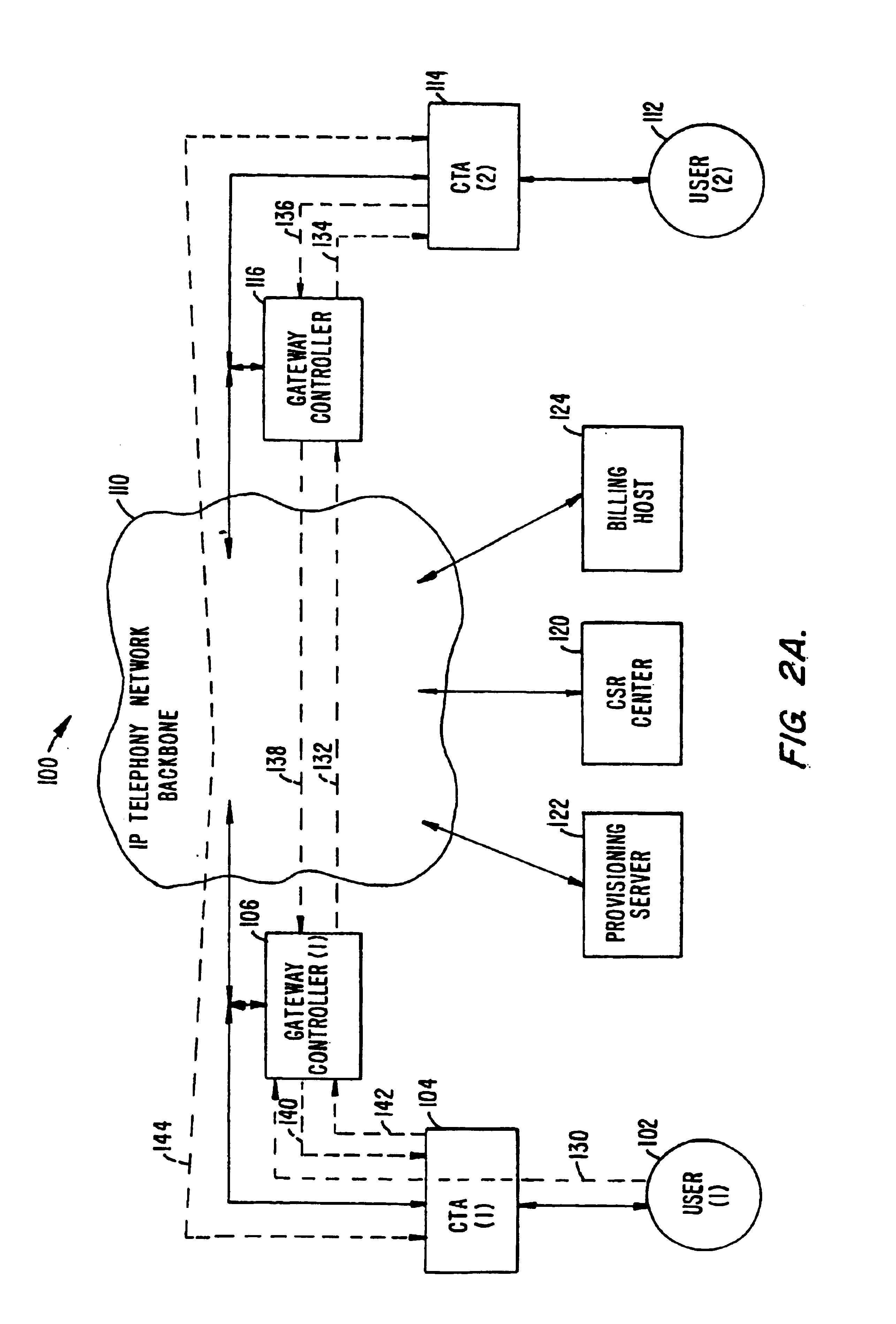Self-generation of certificates using secure microprocessor in a device for transferring digital information
a technology of secure microprocessor and digital information, applied in the direction of securing communication, digital transmission, instruments, etc., can solve the problems of putting a high processing burden on the participating system, tampering, and still existance, so as to prevent tampering and breakage
- Summary
- Abstract
- Description
- Claims
- Application Information
AI Technical Summary
Benefits of technology
Problems solved by technology
Method used
Image
Examples
Embodiment Construction
The present invention is preferably included in a cable telephony system that is described in detail in the priority documents referenced at the beginning of this specification. Although specific reference is made to a cable telephony system, the invention is adaptable for use in virtually any telecommunications system that uses secured transactions.
Cable Telephony Adapter
FIG. 2A shows a portion of an IP telephony network 100 constructed in accordance with the present invention. The network 100 includes a first user 102 coupled to a source CTA 104. The source CTA 104 is further coupled to a source gateway controller 106 and an IP telephony network backbone 110.
The network 100 also includes a second user 112 coupled to a destination CTA 114. The destination CTA 114 is further coupled to a destination gateway controller 116 and the IP telephony network backbone 110. In addition, the network 100 also includes a customer service representative (CSR) center 120, a provisioning server 122...
PUM
 Login to View More
Login to View More Abstract
Description
Claims
Application Information
 Login to View More
Login to View More - R&D
- Intellectual Property
- Life Sciences
- Materials
- Tech Scout
- Unparalleled Data Quality
- Higher Quality Content
- 60% Fewer Hallucinations
Browse by: Latest US Patents, China's latest patents, Technical Efficacy Thesaurus, Application Domain, Technology Topic, Popular Technical Reports.
© 2025 PatSnap. All rights reserved.Legal|Privacy policy|Modern Slavery Act Transparency Statement|Sitemap|About US| Contact US: help@patsnap.com



